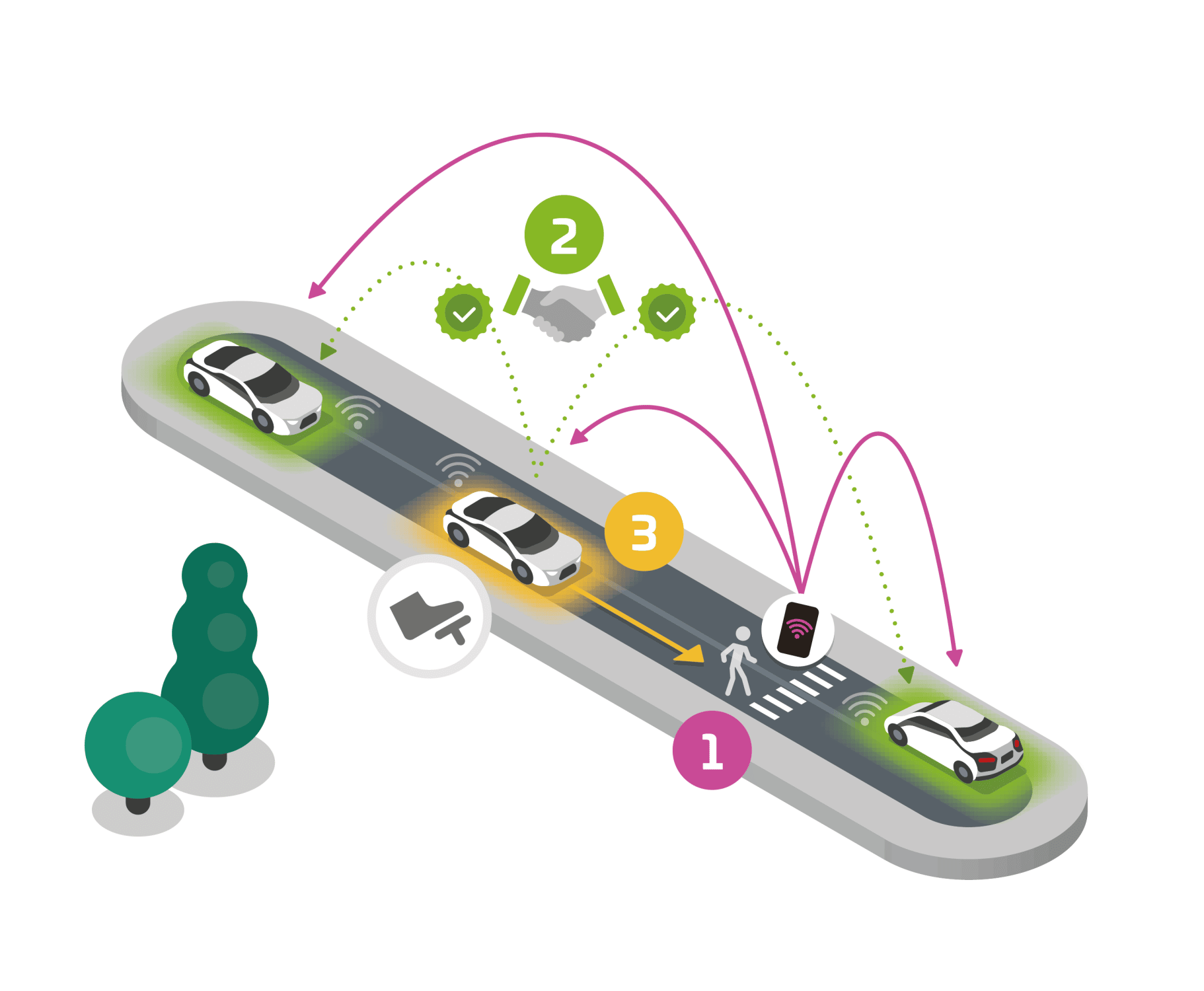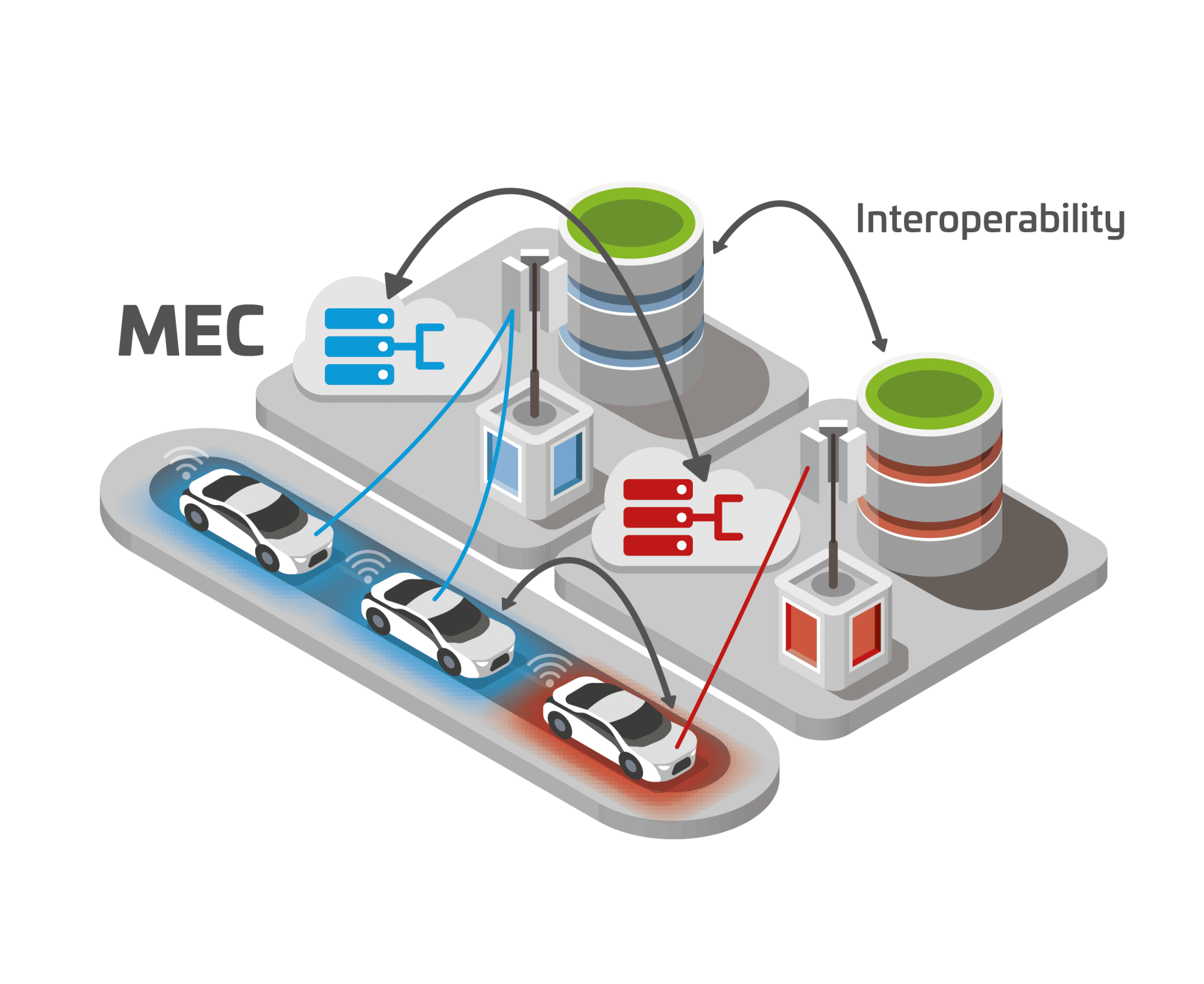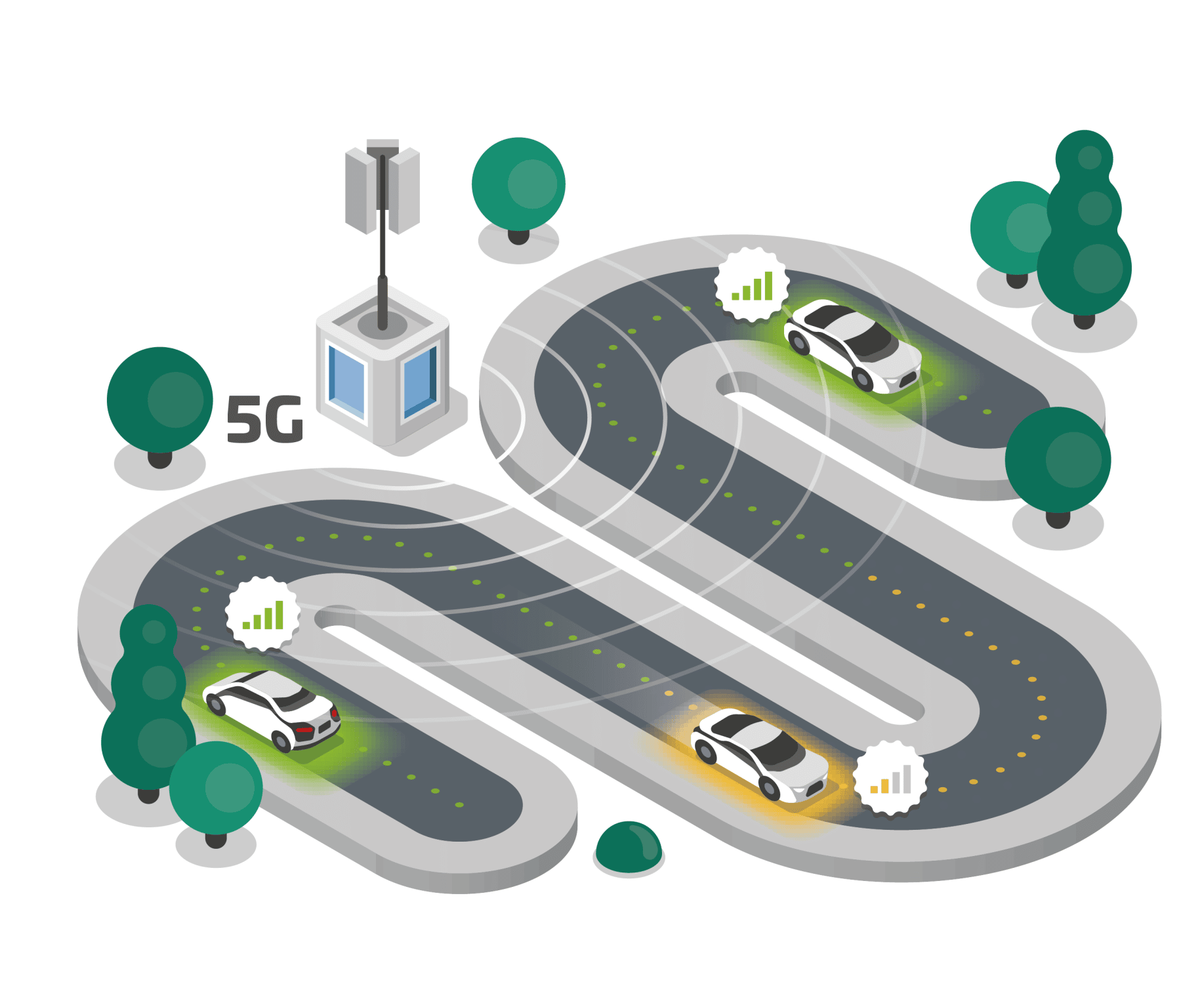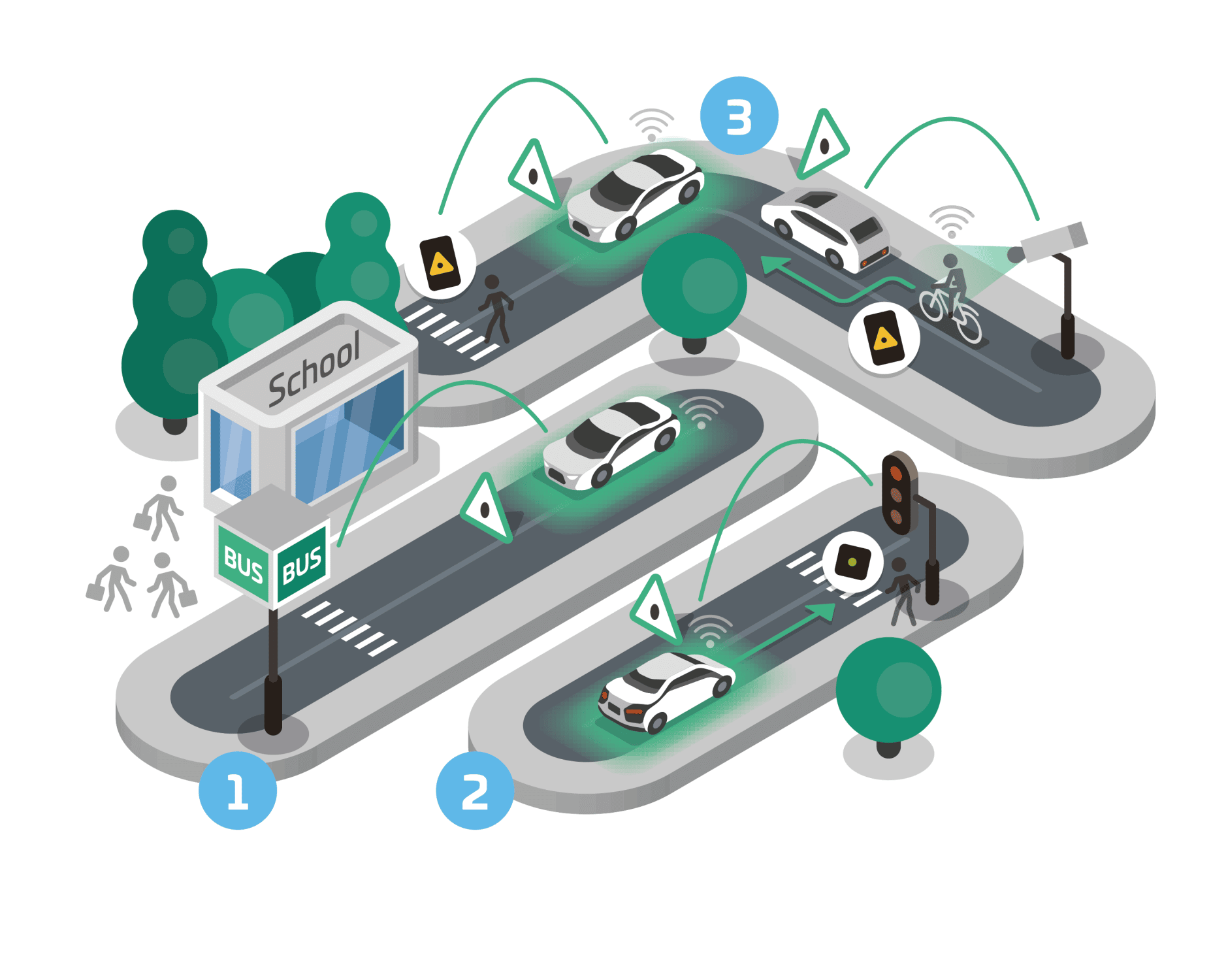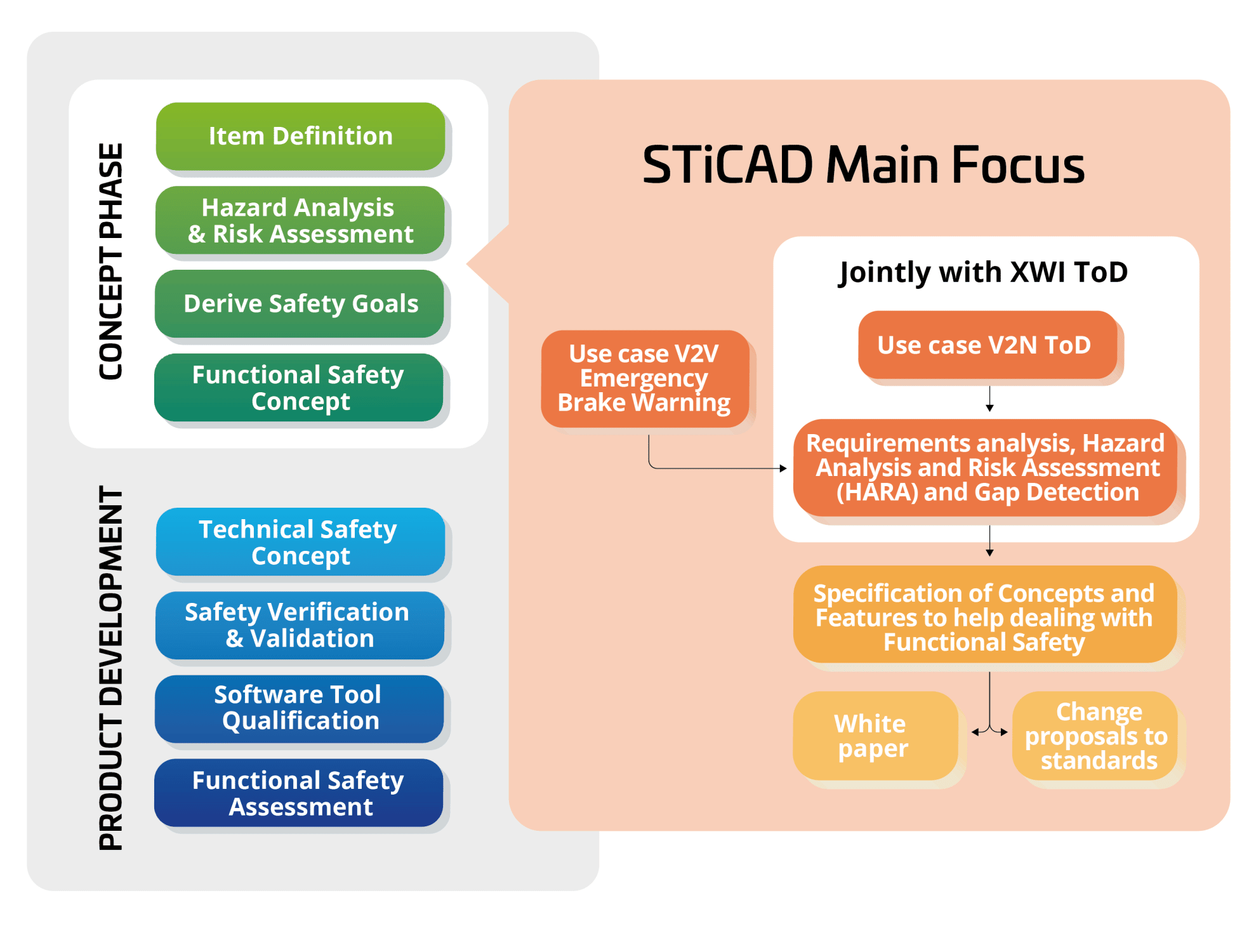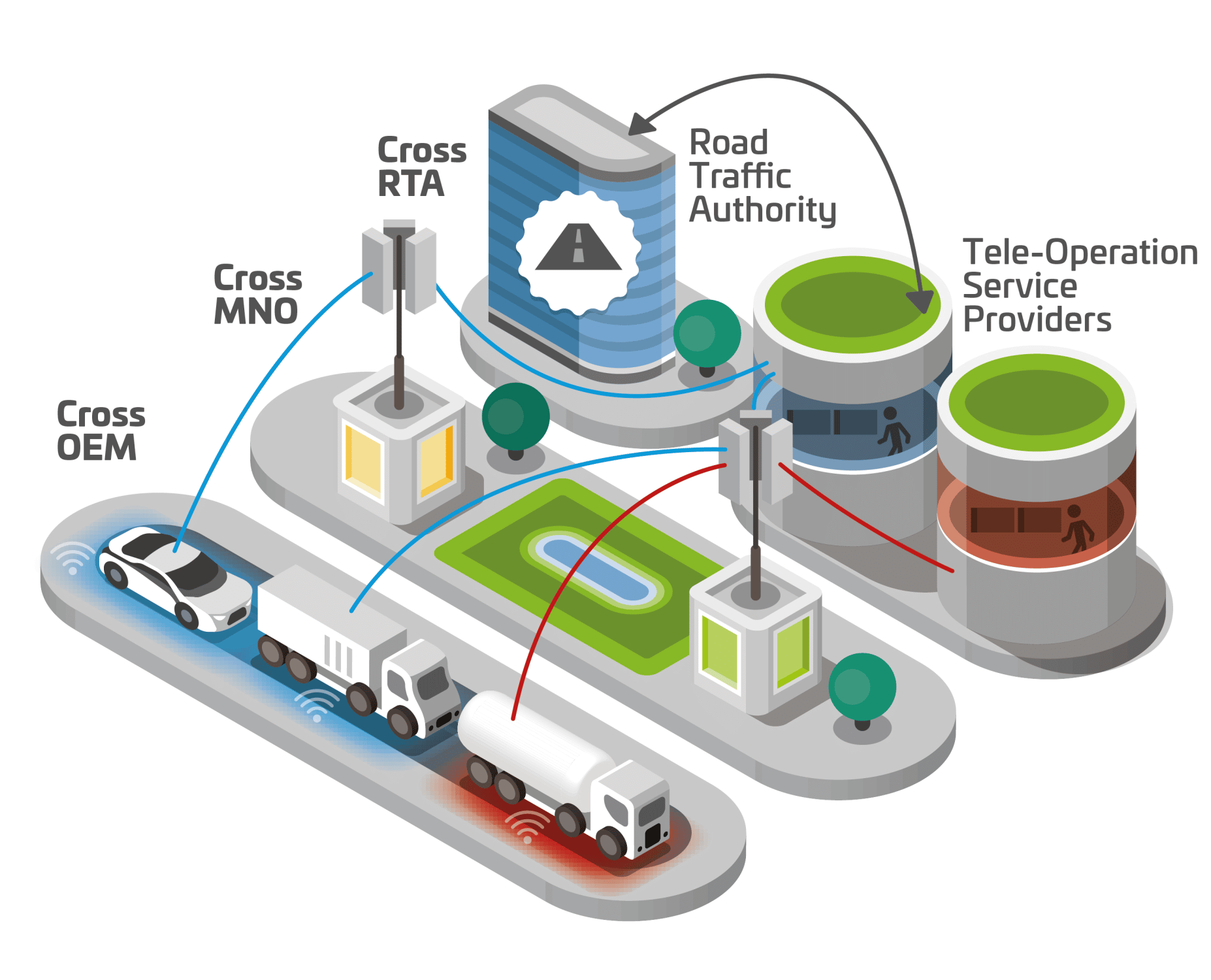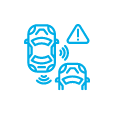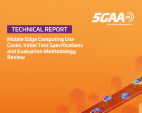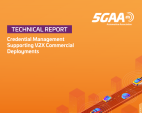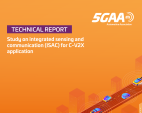
Connected mobility
5G-V2X onward
5G technologies are the next generation of wireless networks. It is key to transmitting more extensive amounts of data more reliably, with lower latency and at faster speeds than ever before.
C-V2X is the next generation telematics that can support new automotive deployments and build a new transportation ecosystem for the future.
The C-V2X technology is already available but to support the autonomous vehicles of tomorrow, the technology must evolve to meet more demanding safety requirements. 5G will facilitate this evolution. Its extreme throughput, low latency, and enhanced reliability will allow vehicles to share rich, real-time data, supporting fully autonomous driving experiences.
The 5G Automotive Association (5GAA) is shaping the path to 5G by supporting C-V2X, as well as working to deliver innovations in on-device intelligence and integration in connected vehicles. The 5GAA is confident that a technically superior standards-based cost-effective and scalable access technology from the cellular industry will carry C-ITS and Connected Vehicle applications well into the 5G era and beyond.
Supporting Innovation: C-V2X Use Cases
Under its current Work Programme, 5GAA seeks to leverage today and tomorrow’s innovative C-V2X solutions
for a safer, greener and more efficient transportation system, benefiting all road users.
Our Roadmap for Advanced Driving Use Cases and Connectivity Technologies
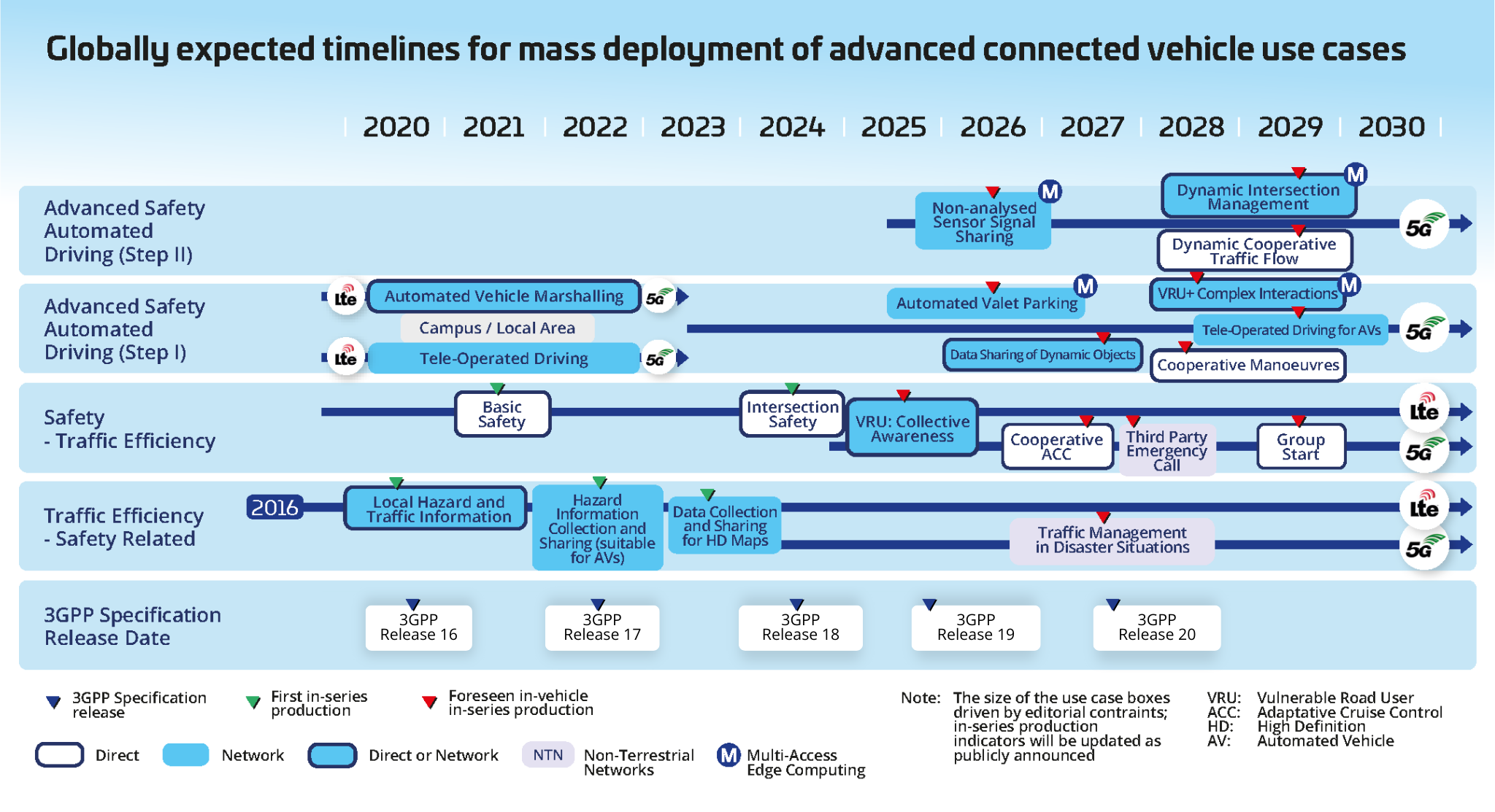

Mediatek

5GAA Conference: Driving the Future of V2X Deployment in the US
On Thursday, 6 February, the 5G Automotive Association (5GAA) will host its highly anticipated conference “US V2X Vision: Bridging Gaps and Accelerating Deployment in the US,” bringing together industry leaders, policymakers, and stakeholders to discuss the future of connected transportation in the United States.
Event Details
Date: February 6, 2025
Time: 9:00 AM – 12:00 PM (EST)
Location: National Press Club, Washington DC
The event will also provide a platform for in-depth discussions on the progress, challenges, and opportunities in achieving a fully connected and automated mobility ecosystem in the US.
Key Themes
As the US Department of Transportation (USDOT) advances its National V2X Deployment Plan, and with recent adoption by the Federal Communications Commission (FCC) of the Second Report and Order on the 5.9 GHz band, this conference will focus on:
- Current achievements and deployments in vehicle-to-everything (V2X) technology;
- The impact of regulatory milestones on deployment progress;
- Priorities for the next administration to accelerate nationwide adoption.
With high-level speakers and key stakeholders attending, the conference promises actionable insights and collaborative discussions to drive innovation and deployment forward.
Panels
The conference will be centred around two dedicated panels:
- “How US States are Deploying C-V2X”: This session will include representatives from the US Department of Transportation and State Departments of Transportation, highlighting the deployment efforts and lessons learned across the country.
- “How Chattanooga Sees C-V2X as a Bridge to its Future”: Featuring representatives from 5GAA and the Mayor of Chattanooga, this panel will explore the city’s forward-thinking approach to using C-V2X as a key enabler for its mobility goals.
Check out the agenda and stay tuned for event highlights and key takeaways, which will be shared on the 5GAA website and social media following the conference!
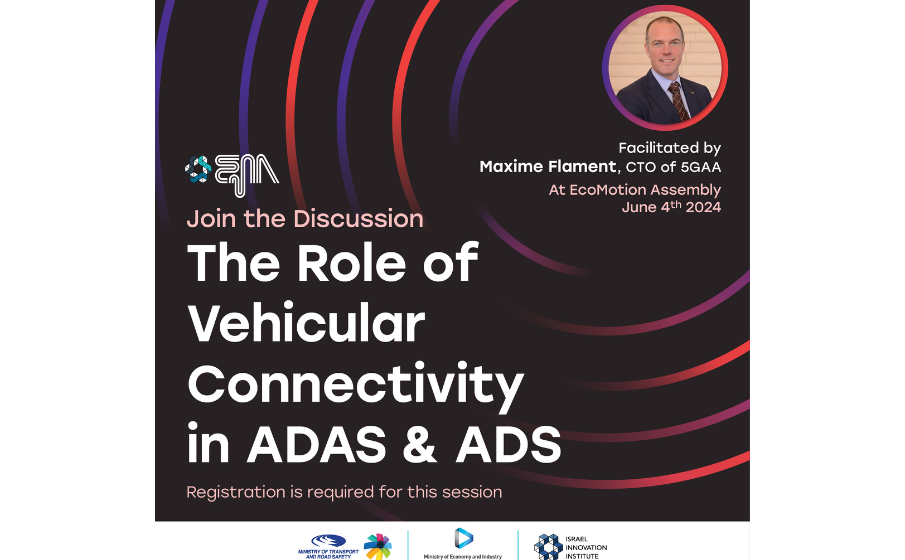
EcoMotion Assembly 2024: The Role of Vehicular Connectivity in ADAS and ADS
5GAA Chief Technology Officer Maxime Flament will be in Rosh Haayin, Israel, on 4 June to lead a workshop on vehicular connectivity in advanced driving and automated driving systems at this year’s EcoMotion Assembly.
Taking place from 11:30 – 12:30, the workshop, ‘The Role of Vehicular Connectivity in Advanced Driving Systems and Automated Driving Systems’, will see 5GAA members and community partners alike take part in an interactive discussion of how seamless vehicle-to-everything (V2X) communication fosters safer, smarter and more efficient transportation.
Participants will have the opportunity to learn about the integration of real-time data exchange between vehicles and other road users, which is instrumental in predicting and mitigating potential hazards and thereby significantly reducing the likelihood of accidents.
Speakers will highlight a number of cutting-edge technologies with an emphasis on their role in enhancing situational awareness and the decision-making capabilities of automated vehicles. This will include:
- 5G-V2X direct edge computing
- Software-defined vehicles
- Artificial intelligence
Don’t miss out on your chance to join the discussion with industry leaders!
For more details and contact info to sign up for the discussion, visit https://www.ecomotionweek.com/workshop-discussions.
All participants must be registered for the main event – use the 5GAA discount code EMA245gaa : https://ecomotion-assembly.forms-wizard.biz/.

Connected Mobility
C-V2X explained
Cellular Vehicle-to-Everything, or C-V2X, is a connected mobility platform that allows vehicles to interact with their surroundings, such as other vehicles, cyclists, pedestrians, road infrastructure, or mobile networks.
To enable connectivity within the broader transport ecosystem, C-V2X uses two complementary transmission modes.
First, direct communications (PC5) works independently of cellular networks and allows vehicles to communicate with other road users (cyclists, pedestrians or other vehicles). Second, network communications (Uu) leverages conventional mobile networks to enable vehicles to receive real-time information about road conditions and local traffic.
By connecting individual vehicles and enabling the development of cooperative intelligent transport systems that reduce congestion and pollution, C-V2X can transform how we look at traffic information to enhance travel and increase road safety.
Leading the new era
of mobility
C-V2X continually evolves over multiple releases in 3GPP. Cellular-V2X (C-V2X) is the umbrella term which encapsulates all 3GPP V2X technologies, including both direct (PC5) and mobile network communications (Uu).
A major milestone was achieved in 2017 by completing LTE-V2X in Release 14, including both direct and mobile network communications delivering basic safety use cases. In 2020, 5G-V2X was completed in Release 16, also combining direct and mobile network communications to enable advanced and automated driving use cases.
Who is 3GPP?
3GPP is a worldwide Standardisation Development Organisation (SDO) developing standards for the different generations of mobile networks: GSM (2G), UMTS (3G), LTE (4G) and 5G, targeting a wide range of consumer and industry applications. When applied in a vehicle connectivity context the acronym V2X (vehicle-to-everything) is added.
C-V2X in detail

C-V2X provides one unified solution for V2V (vehicle-to-vehicle), V2I (vehicle-to-infrastructure), and V2P (vehicle-to pedestrian) operation with V2N (vehicle-to-network) by leveraging existing cellular network infrastructure.
- Device-to-device [1] is Vehicle-to-Vehicle (V2V), Vehicle-to-(Roadway) Infrastructure (V2I) and Vehicle-to-Pedestrian (V2P) direct communication without necessarily relying on network involvement for scheduling.
- Device-to-cell tower is another communications link that enables network resources and scheduling and utilises existing operator infrastructure. Device-to-cell tower communications constitute at least part of the V2I proposition and are essential to end-to-end solutions.
- Device-to-network is the V2N solution using traditional cellular links to enable cloud services to be part and parcel of the end-to-end solution.
In the device-to-device mode (V2V, V2I, V2P) operation, C-V2X does not necessarily require any network infrastructure. It can operate without a SIM, without network assistance and uses GNSS as its primary time synchronisation source.
C-V2X also supports V2N applications using existing cellular networks where other voices and data communications occur. V2N would deliver network assistance and commercial services requiring the involvement of a Mobile Network Operator (MNO).
Collectively, the transmission modes of shorter-range direct communications (V2V, V2I, V2P) and longer-range network-based communications (V2N) comprise what we call Cellular-V2X[2].
[1] Relies on the PC5 interface specified by 3GPP for device-to-device operation.
[2] See 3GPP TR 22.885 Study on LTE Support for Vehicle to Everything (V2X) Services.
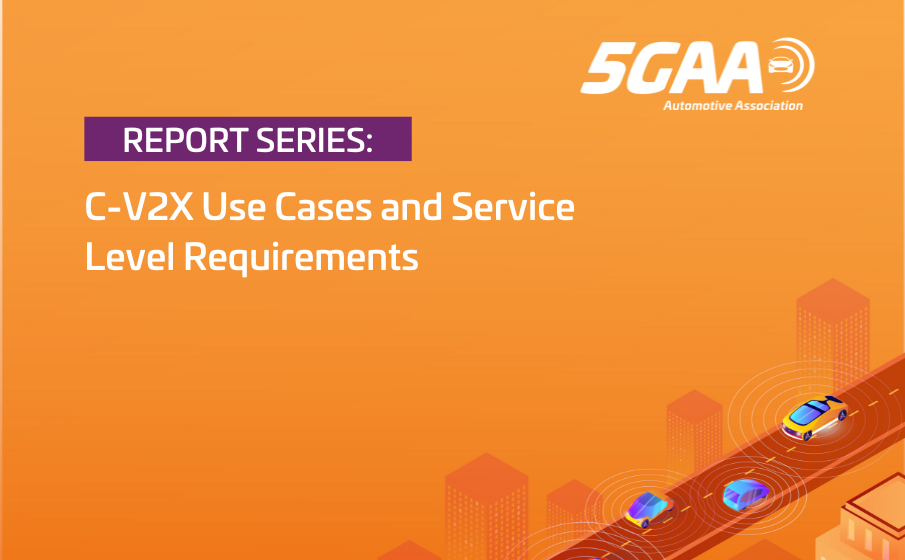
C-V2X Use Cases and Service Level Requirements (Vols. I, II and III)
This updated document series from the 5G Automotive Association (5GAA) provides a comprehensive framework for defining and analysing C-V2X use cases and their associated Service Level Requirements (SLRs). It builds upon previous work, refining methodologies for describing use case scenarios, considering factors like road environments and involved actors.
Published in three volumes, each of them includes a curated set of C-V2X use cases, respectively detailed with specific SLRs. These use cases serve as a valuable resource for 5GAA work groups, guiding the development of C-V2X solutions, informing standardisation efforts, and supporting the creation of robust business cases for deployment.

NIO Inc.

DESAY SV
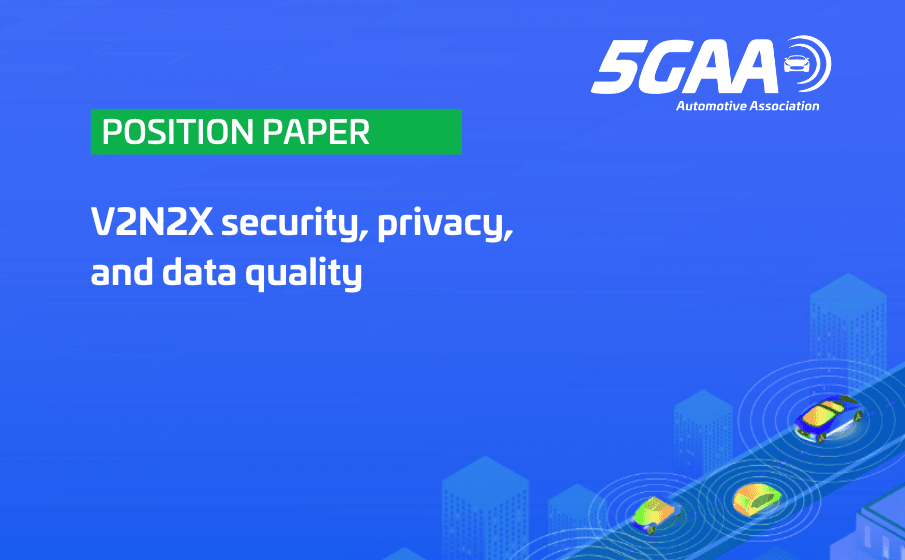
V2N2X security, privacy, and data quality
Cellular Vehicle-to-Everything, or C-V2X, is an umbrella term that encompasses all 3GPP V2X technologies, including both direct (PC5) and mobile network communications (Uu). In many cases, both direct and network modes of C-V2X can be used for the same or similar automotive and Intelligent Transport System (ITS) applications, yet with different service characteristics. However, there are fundamental differences when it comes to the architecture and realisation of different Use Cases applying mobile network vs. direct, short-range, communications. This leads to different ways of handling security, privacy, and how to ensure data quality – the fundamental requirements of every ITS service – when using C-V2X mobile network communication or direct communication. This is already reflected in other organisations such as ITS America.
This 5GAA paper provides an overview of how security, privacy, and data quality are addressed for C-V2X using mobile network and backend communications, also known as Vehicle-to-Network-to-Everything (V2N2X) solutions.
The paper was originally published in December 2024. The current downloadable version is the updated edition, released on 3 June 2025. 5GAA remains committed to keeping all its publications accurate and up to date.

About us
Connected Mobility for People, Vehicles and Transport Infrastructure
The 5G Automotive Association (5GAA) is a global, cross-industry organisation of companies from the automotive, technology, and telecommunications industries (ICT), working together to develop end-to-end solutions for future mobility and transportation services. Created in September 2016, 5GAA has rapidly expanded to include key players with a global footprint in the automotive, technology and telecommunications industries. This includes automotive manufacturers, tier-1 suppliers, chipset/communication system providers, mobile operators and infrastructure vendors.

5GAA was created to connect the telecom industry and vehicle manufacturers to develop end-to-end solutions for future mobility and transportation services.
Mission
5GAA bridges the automotive and telecommunication industries in order to address society’s connected mobility needs, bringing inclusive access to smarter, safer and environmentally sustainable services and solutions, integrated into intelligent road transportation and traffic management.
A visionary roadmap

What we do
5GAA is addressing today’s mobility key challenges. With C-V2X technology, 5GAA will revolutionise the mobility ecosystem and the way drivers interact with the world. 5GAA’s ambition is to improve the overall transportation industry to make it safer, greener and more efficient for vehicles, road users and the surrounding infrastructure.

5GAA has defined 4 strategic pillars designing the short and long term goals in very diverse domains contributing to the same ambition: Connected Mobility.


